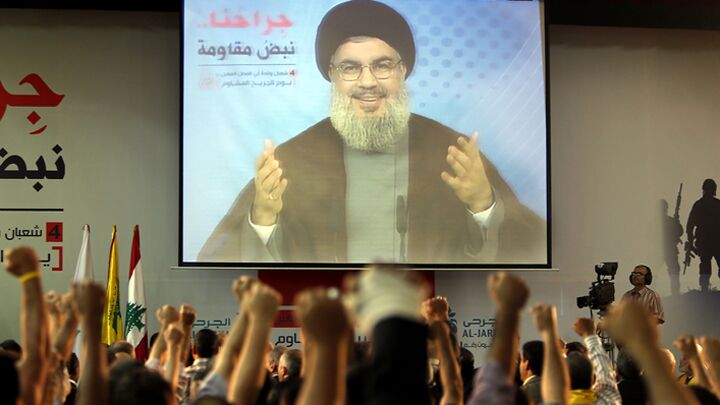
Where Terrorists Learn to Be Terrorists
While most nations lament the ongoing conflict in Syria, some see the war as an opportunity. Where else can an aspiring terrorist go to learn the art of urban warfare and tactics? This is an opportunity that the terrorist group Hezbollah is not passing up.
The death toll in Syria is approaching 126,000, according to the Syrian Observatory for Human Rights. The bloody, street-to-street, house-to-house fighting—pitting the numerous rebel groups forces against Syrian President Bashar Assad, bolstered by fighters from Hezbollah—has continued for well over two years. Continual fighting—uninhibited by negotiations and fueled by outside forces such as Russia, Saudi Arabia and Iran—has taken a high death toll on both sides. For some, however, the death toll is a worthwhile sacrifice for the training received.
Hezbollah, the radical Islamic terrorist group based in southern Lebanon and funded in large part by Iran, joined the fight in Syria after leader Hassan Nasrallah gave what amounted to a declaration of war on May 25.
Since that time, Hezbollah’s casualties have reached 232, according to the Syrian Observatory for Human Rights. Regardless of these losses, Hezbollah sees immense benefit in participating in the Syrian civil war.
For every Hezbollah soldier killed—even if it was a veteran from the wars with Israel—many more are receiving combat training. Hezbollah has a force ranging from 20,000 to 50,000. The numbers vary so dramatically because many of its members are reservists. Most work a regular job, but take up arms in times of war.
Now that Hezbollah is involved in Syria, it is operating differently. It sends fighters into Syria for a month of fighting and training, then brings them home for rest and recuperation. This cycle gives members training and preparation for a larger conflict of Hezbollah’s own, most likely against its age-old enemy to the south, Israel.
Hezbollah has been at relative peace with Israel for six years. Many Hezbollah members had no combat training before the Syrian civil war began. In the past, inexperienced soldiers squared off against highly trained, well-armed Israeli forces. But the Syrian civil war presents the unique opportunity to train for a future conflict with Israel.
For the first time, Hezbollah is intimately involved in a war where the opposition is not Israel. Instead, the enemy is the Syrian opposition—a far weaker opponent. The fighting gives Hezbollah an opportunity to practice offensive warfare in an urban environment.
This is just what Hezbollah needs if it is to be ready for a future attack against Israel. Since the 2006 war in southern Lebanon, Hezbollah has been building up its defenses. Southern Lebanon is a maze of tunnels, bunkers and rocket launch sites. These help to curb the influence of Israel’s air superiority.
Hezbollah has also spent its time building up its weapons cache. In 2010, then U.S. Defense Secretary Robert Gates said, “Syria and Iran are providing Hezbollah with so many rockets that they are at a point where they have more missiles than most governments in the world.”
Top brass in the Israeli Defense Force say that Hezbollah now has almost 65,000 rockets and missiles—10 times the number it had in 2006. Some of the missiles have a range of over 400 miles, putting the entirety of Israel well within range.
Now that its members are being combat trained in Syria, Hezbollah has the skilled soldiers to man its extensive fortifications and wield its armaments. There is no denying that Hezbollah has benefited from the ongoing conflict to its east. While many may not see the ramifications today, the tensions are undoubtedly building in Israel.
Hezbollah is a danger that Israel must face. The problem for Israel is only going to intensify as the proliferation of weapons continues and as Hezbollah troops gain more experience. Israel will not face the same enemies it did six years ago. The Middle East is changing rapidly, and not in Israel’s favor. The Arab Spring has left the region more volatile than ever, and Israel’s old ally, the United States, is pushing for Israel to make dangerous peace deals with the Palestinians. More devastating still, the U.S. is cozying up to Iran, the very nation that sponsors Hezbollah and threatens to wipe Israel off the map!
The Middle East is spiraling out of control, and the ones benefiting most are radical Islamic regimes. If you are concerned about where the region is headed and how it will affect you, it’s time to delve into the specific prophecies that surround this volatile region. Request our free booklets History and Prophecy of the Middle East, The King of the South and Jerusalem in Prophecy. These booklets give great insight into the conditions that are about to envelop the nations in the Mideast.
It certainly isn’t a pleasant picture in the short run, but as you will read, God promises to cut short this time of violence and chaos so He can bless the region as never before! As Trumpet editor in chief Gerald Flurry writes in The King of the South, “Jesus Christ will be here in the very near future. And He will bring peace to the entire world! That is one big reason there is so much violence over Jerusalem in this end time. Satan knows that God is going to rule the world, and even the universe, from Jerusalem.”
That is the hope you will read in these booklets. That is the promise God is set to fulfill in the very near future.
